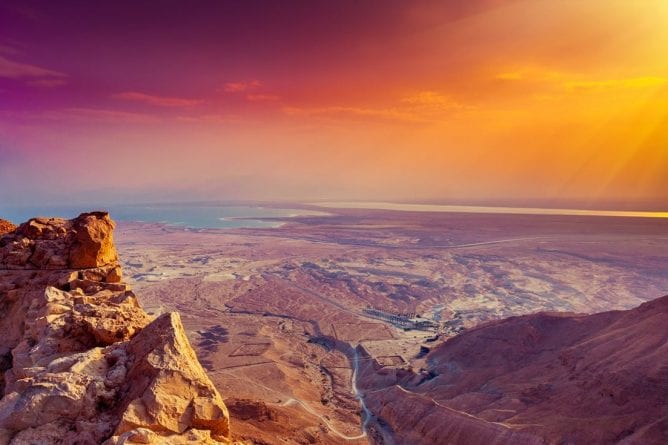Spanning 4,700 square miles, the Negev Desert covers over half of Israel. The majority of the Negev is very arid, given its location east of the Sahara. Average temperatures typically range from 70 degrees Fahrenheit in the winter months to well above 100 degrees during the summer months. There is also an average rainfall of virtually zero throughout the year. These values are relatively standard of desert environments.
From a landscape perspective, the Negev is a rocky desert with intermittent wadis, which are dry rivers that briefly bloom after a modicum of rain, and sand dunes. Because of the arid climate and low rainfall, the soil is very tough; thus, there is very little vegetation that can survive and flourish. The image below is an example of what types of flora populate the Negev.
Pisanty, Gideon. Spring Blooms in the Negev. Negev Mountains, 5 Mar. 2010.
From a touristic perspective, the Negev sees a lot of action. Whether it be busing through the desert on their way to the Dead Sea or to Masada, tourists interact with the desert in a variety of ways. While this inflow of people has many benefits, mostly economic, it also can have many detriments, both from a cultural perspective as well as environmentally. The image below shows the ancient ruin of Petra, a world-renowned tourist attraction located in the Negev.
Werner, Berthold. Petra, Al Khazneh. Petra, 10 Nov. 2009.
According to John Shoup in his “The impact of tourism on the Bedouin of Petra,” the commercialization of tourism to sites in the Negev such as Petra has had a tangible negative impact. Whereas the Bedouin, being a nomadic people, generally do not directly harm the environment, there seems to be a proliferation of permanent or semi-permanent settlements in the region. This development is to accommodate the increased influx of tourists, but it has many drawbacks. A report titled The Ecological Impacts of Homestead Settlements in the Negev: Final Report references catalogs these drawbacks as a direct product of urban environments, increased settlement and circulation of people, namely “direct habitat loss and replacement with an entirely dissimilar environment” as well as “habitat destruction, habitat change and fragmentation.”
“Temperature average”. Israel Meteorological Service. Archived from the original on 18 June 2013. Retrieved 8 December 2011.(in Hebrew)
Shoup, John. “The impact of tourism on the Bedouin of Petra.” The Middle East Journal (1985): 277-291.
Ornstein, Daniel, et al. The Ecological Impacts of Homestead Settlements in the Negev: Final Report. The Israel Ministry of Environmental Protection, Jerusalem, Nov. 2009, www.sviva.gov.il/InfoServices/ReservoirInfo/DocLib4/R0201-R0300/R0288.pdf.


